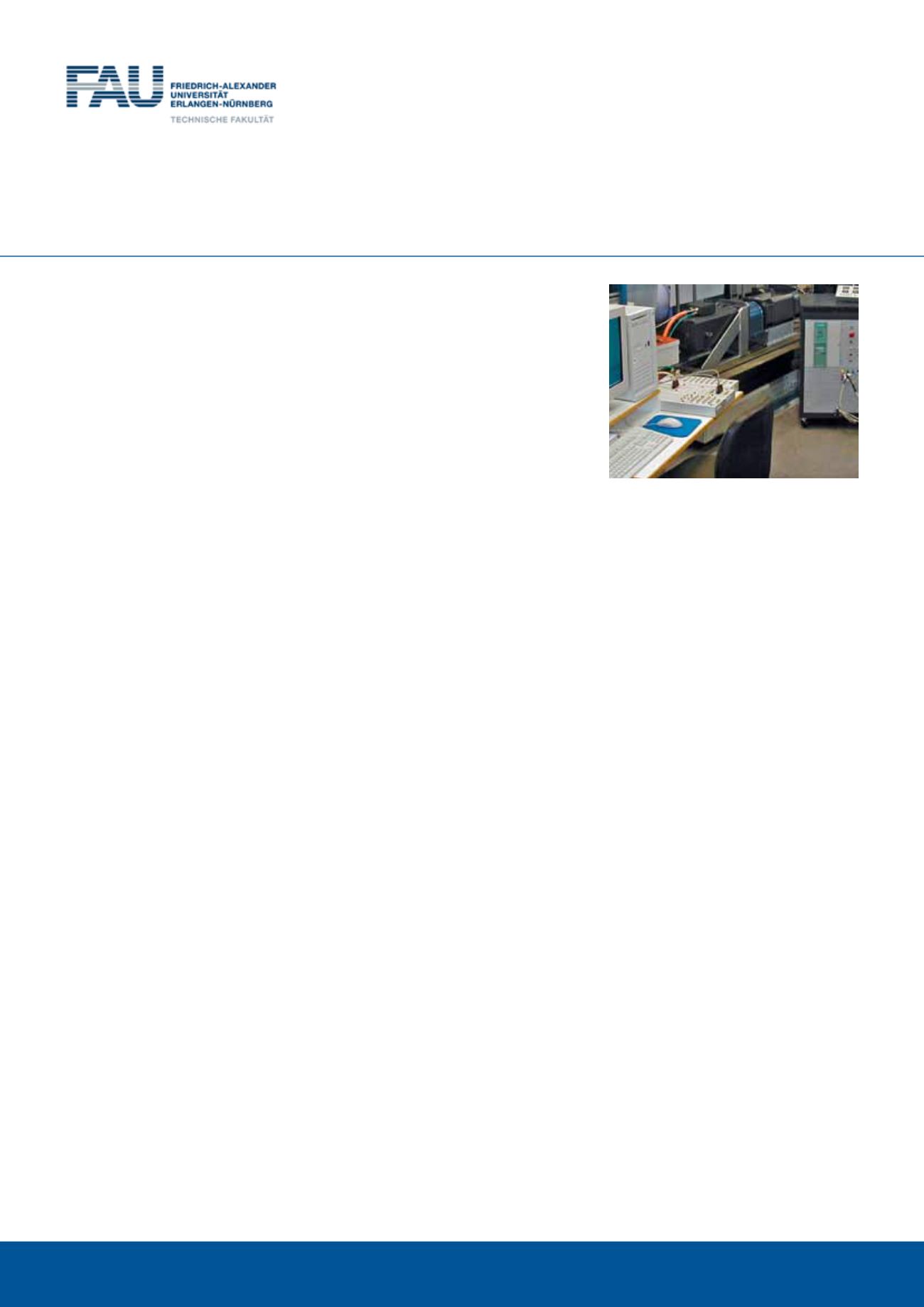
106
Overview
The chair of Eletrical Drives was founded
in 1973 as 6
th
Chair of the Department
of Electrical, Electronic and Communica-
tions Engineering.
Because of the variety of production
machines, different motor types have
been developed over the years, which
have essentially been operated directly
connected to an electrical grid.
Due to the progress in microelectronics
and power semiconductor elements it is
increasingly possible to control the speed
of the motors digitally with the aid of
power-electronical converters. The sig-
nificant advantages of modern electrical
drive technology are improved energy
efficiency and improvement of the tech-
nical processes
The electrical drive technology entails the
following topics
•
electrical drives
•
power electronics
•
electrical machines
•
digital control
•
field buses
and their combination to the optimal drive
system for the respective application.
Research
Power electronics
Controlled electric drives often have to de-
celerate electrically the motor with the cou-
pled mechanical load to a complete stop.
The kinetic energy stored in the drive sys-
tem shall be economically fed back into
the grid. For that purpose a new converter
topology is being analysed, whose feed-
back inverter unit operates without pulse-
width modulation and works with a smaller
dc-link capacitor. Up to now, Silicon ele-
ments (Si) have been used in power elec-
tronics exclusively. But new elements from
silicon carbide (SiC) and gallium nitride (GaN)
feature substantial advantages for power
electronic applications. Therefore these
new elements are being tested for the ap-
plication in converters for electrical drives.
Digital control of three-phase drives
In many applications three-phase induc-
tion motors are used almost exclusively
today. Permanent-magnet synchronous
motors weigh less and are smaller in vol-
ume and are more efficient at a com-
parable performance which make in-
novative solutions in chassis suspension
possible. The renouncement of a sensor
offers additional clearance. Therefore the
operation of a permanent-magnet syn-
chronous motor with sensorless controls
is being investigated.
Laboratory equipment/ apparatus
equipment
•
17 workplaces up to 30 kVA with
400 V three-phase supply system,
machine bed,
•
200 kW-test location with direct
current and three-phase current drives,
400V – 690V, crane
•
Real-time development systems for
open-loop and closed-loop control
with graphical user interface
•
Power measurement with up to
6 phases in one device
•
Torque measurement from 2 to
2000Nm
•
Measuring technology for power
semiconductors
•
Miscellaneous electrical devices and
converters
Offers of the chair for co-operation
relations and for the transfer of
technology and research
•
research and development from the
exploratory focuses
•
testing and measuring of drive systems
•
development and investigation of
power electronic circuits
•
Calculation and design of electrical
machines
•
simulation of drive systems
Friedrich-Alexander-Universität Erlangen-Nürnberg, EAM
Test bench for sensorless operation of permanent-
magnet synchronous motors including realtime
development system, motors and converters.


